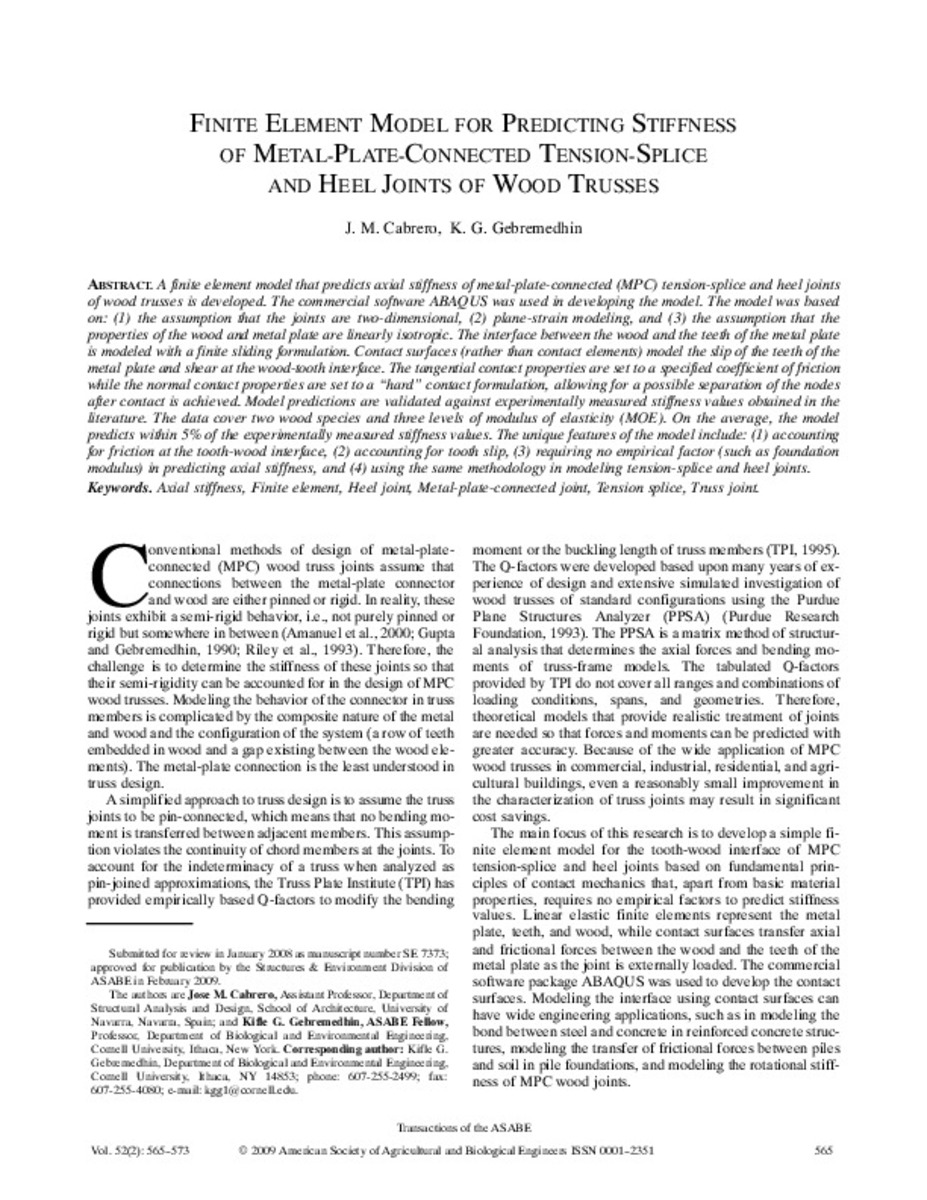Finite Element Model for Predicting Stiffness of Metal-Plate-Connected Tension-Splice and Heel Joints of Wood Trusses
Ficheros en este ítem:
Estadísticas e impacto
Los ítems de Dadun están protegidos por copyright, con todos los derechos reservados, a menos que se indique lo contrario.







